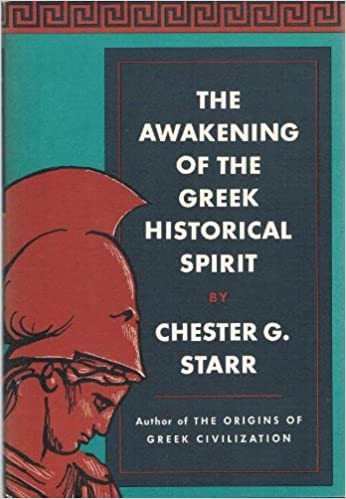Hypothesis Three: Dating the Development of Consciousness – Subtopic: Ancient Civilizations & Texts
Julian Jaynes found important evidence for dating the development of consciousness by looking at the culture and customs of ancient civilizations; tracing the development of mind-related words from the physical origins; and contrasting the lack of introspection and mental subjectivity in the Iliad versus the clear descriptions of these that are found in the Odyssey. Below is a small sample of research relevant to this aspect of Jaynes’s theory.
Articles
- Greek and Roman Hallucinations
Harris, W.V., in W.V. Harris (ed.), Mental Disorders in the Classical World (Brill, 2013).
- Greek and Roman Hallucinations
Harris, W.V., in W.V. Harris (ed.), Mental Disorders in the Classical World (Brill, 2013).
- Greek and Roman Hallucinations
Harris, W.V., in W.V. Harris (ed.), Mental Disorders in the Classical World (Brill, 2013).
- Greek Origins of Belief
Johnson, David Martel, American Philosophical Inquiry, October 1987, 24, 4.
- The Muses and Creative Inspiration: Homer to Milton
McHugh, Kathleen Potthoff, UNF Theses and Dissertations, 1993, Paper 85.
- Plato’s Vowels: How the Alphabet Influenced the Evolution of Consciousness
Poletti, Frank, World Futures: The Journal of General Evolution, 2002, 58, 1.
- Whose Anticipations?
Riegler, Alexander, Learning Notes in Computer Science, 2004, 2684, 3-12.
- Metaphors Concerning Speech in Homer
Wiseman, Rob, in Robert T. Craig and Heidi L. Muller (eds.), Theorizing Communication: Readings Across Traditions, 2007, 7–18.
Books

|
The Greeks and the Irrational
Dodds, E. R. (University of Chicago Press, 1951/1983)
In this philosophy classic, which was first published in 1951, E. R. Dodds takes on the traditional view of Greek culture as a triumph of rationalism. Using the analytical tools of modern anthropology and psychology, Dodds asks, “Why should we attribute to the ancient Greeks an immunity from ‘primitive’ modes of thought which we do not find in any society open to our direct observation?” Praised by reviewers as “an event in modern Greek scholarship” and “a book which it would be difficult to over-praise.”
Cited by Jaynes on pgs. 71, 162, 322, 330, 335, 344, 405.
|

|
Asclepius: A Collection and Interpretation of the Testimonies
Edelstein, E.J. and L. Edelstein (The Johns Hopkins University Press, 1945/1998)
Throughout nearly all of antiquity, the legendary Greek physician, Asclepius, son of Apollo and Coronis, was not only the primary representative of divine healing, but also so influential in the religious life of later centuries that, as Emma J. Edelstein and Ludwig Edelstein point out, “in the final stages of paganism, of all genuinely Greek gods, [he] was judged the foremost antagonist of Christ.” Providing an overview of all facets of the Asclepius phenomenon, this book, first published in two volumes in 1945, comprises a unique collection of the literary references and inscriptions in ancient texts-given in both the original and translation-to the deity, his life, his deeds, his cult, and his temples, as well as an extended analysis of them.
Cited by Jaynes on p. 334.
|
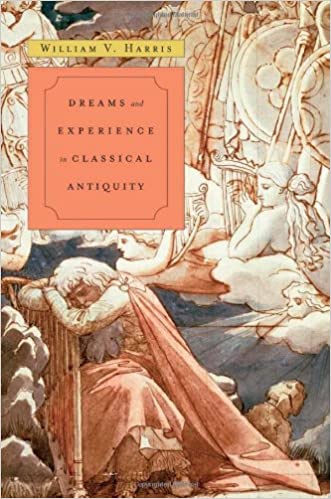
|
Dreams and Experience in Classical Antiquity
Harris, William V. (Harvard University Press, 2009)
From the Iliad to Aristophanes, from the gospel of Matthew to Augustine, Greek and Latin texts are constellated with descriptive images of dreams. Some are formulaic, others intensely vivid. The best ancient minds―Plato, Aristotle, the physician Galen, and others―struggled to understand the meaning of dreams. With Dreams and Experience in Classical Antiquity the renowned ancient historian William Harris turns his attention to oneiric matters. This cultural history of dreams in antiquity draws on both contemporary post-Freudian science and careful critiques of the ancient texts. Harris traces the history of characteristic forms of dream-description and relates them both to the ancient experience of dreaming and to literary and religious imperatives. He analyzes the nuances of Greek and Roman belief in the truth-telling potential of dreams, and in a final chapter offers an assessment of ancient attempts to understand dreams naturalistically. How did dreaming culture evolve from Homer’s time to late antiquity? What did these dreams signify? And how do we read and understand ancient dreams through modern eyes? Harris takes an elusive subject and writes about it with rigor and precision, reminding us of specificities, contexts, and changing attitudes through history.
|
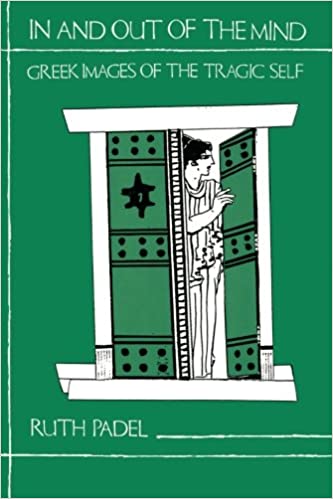
|
In and Out of the Mind: Greek Images of the Tragic Self
Padel, Ruth (Princeton University Press, 1992)
Ruth Padel explores Greek conceptions of human innerness and the way in which Greek tragedy shaped European notions of mind and self. Arguing that Greek poetic language connects images of consciousness, even male consciousness, with the darkness attributed to Hades and to women, Padel analyzes tragedy’s biological and daemonological metaphors for what is within.
While Padel disagrees with Jaynes on some minor points, overall her discussion of the mentality of fifth century B.C. Athenians can be seen as supportive of his theory.
|
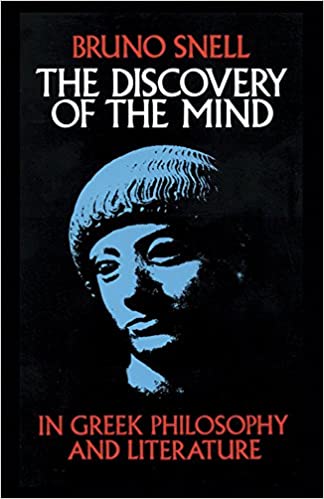
|
The Discovery of the Mind In Greek Philosophy and Literature
Snell, Bruno (Dover Publications, 1946/2011)
In this immensely erudite book, German classicist Bruno Snell traces the establishment of a rational view of the nature of man as evidenced in the literature of the Greeks — in the creations of epic and lyric poetry, and in the drama. Here are the crucial stages in the intellectual evolution of the Greek world: the Homeric world view, the rise of the individual in the early Greek lyric, myth and reality in Greek tragedy, Greek ethics, the origin of scientific thought, and Arcadia. Drawing extensively on the works of Homer, Pindar, Archilochus, Aristophanes, Sappho, Heraclitus, the Greek tragedians, Parmenides, Callimachus, and a host of other writers and thinkers, Snell shows how the Homeric myths provided a blueprint for the intellectual structure the Greeks erected; how the notion of universality in Greek tragedy broadened into philosophical generalization; how the gradual unfolding of the concepts of intellect and soul provided the foundation for philosophy, science, ethics, and finally, religion.
Cited by Jaynes on p. 71.
|

|
The Sound of Greek
Stanford, W.B. (Berkeley: University of California Press, 1967)
Cited by Jaynes on p. 364.
|

|
Documents in Mycenaean Greek
Ventris, M.C.F. and J. Chadwick (Cambridge: Cambridge University Press, 1973)
In their 1953 book, Documents in Mycenaean Greek, Michael Ventris (1922-56) and John Chadwick (1920-98) demonstrated that the previously mysterious script Linear B was, in fact, a syllabic form of written Greek, thereby revolutionizing ancient history and linguistics. In this second edition, originally published in 1973, Chadwick examines how the study of the subject has expanded since 1953 and includes some of the material discovered since the initial publication. This book continues to be a valuable part of Classical scholarship and will be of interest to Classicists of every discipline.
Cited by Jaynes on p. 80.
|
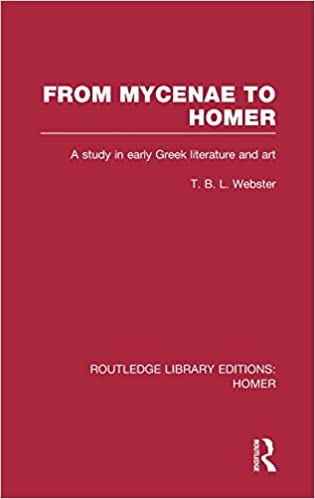
|
From Mycenae to Homer: A Study in Early Greek Literature and Art
Webster, T.B.L., (London: Methuen, 1958)
This book, first published in 1958, aims to describe Greek art and poetry within this ambiguous period of ancient history (often referred to as the Greek ‘Dark Ages’), and to explore the possibilities of learning about Mycenaean civilisation from its own documents and not only from archaeology.
Specifically, Webster utilises Michael Ventris’ decipherment of Linear B in 1952 – which proved that Greek was spoken in the Mycenaean world – to determine the general contours of aesthetic development from Mycenae to the time of the written composition of the Homeric epics. Because they record Mycenaean civilisation in Mycenaean terminology, while Homer was writing in Ionian Greek at the beginning of the polis civilisation, they show how much in Homer is in fact Mycenaean. Further, where it is clear that these Mycenaean elements cannot have survived until Homer’s time, they tell us something about the poetry which connected the two.
Cited by Jaynes on pgs. 80, 272, 370.
|






